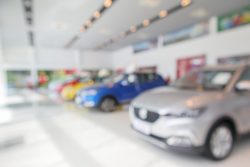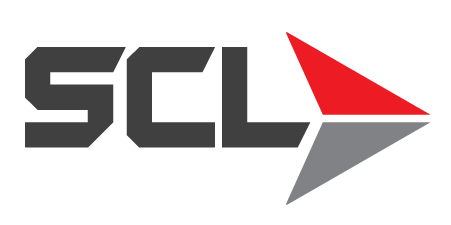4 Challenges for the Automotive Industry as June Re-Open Looms in California

Technician Shortages, Inventory, and the Growing Digital Market Remain Top Concerns
Following a recent announcement by Gov. Gavin Newsom that California will aim to fully re-open its economy by June 15, automotive dealerships and service shops are now anticipating the closest environment to normal they’ve had in over a year.
Despite the step forward, the announcement does not come without challenges. Here are four major issues our partners in the automotive industry are keeping a close eye on as June nears and they prep for what many hope will be a full re-open.
-
Technician Shortages
In 2020, when car sales shuttered and business was drastically reduced due to pandemic stay-at-home orders and closures, dealerships and service shops instituted a wave of layoffs. In April 2020, as one example, the nation’s largest auto dealership chain, AutoNation, announced it would furlough or lay off 7,000 employees while slashing executive pay.
For much of the past year, that has remained the status quo – among retail, repair, and especially manufacturers. While that has allowed many in the industry to stay afloat, it’s also contributed to the ongoing labor shortage – especially in automotive service aisles. The shortfall of skilled automotive technicians has been a battle for several years – with an August 2020 report by TechForce Foundation advocacy group saying nearly 400,000 additional automotive technicians will be needed through 2024 to meet demand.
“Throughout the pandemic, the industry has been up and down, all over the place. One shop will be busy, one will be slow, with most running around 60% to 75% for some time,” said SCL Customer Solutions Representative Don Parker. “Once the last round of stimulus checks went out, the shops began to fill up with big repairs. In another three months when everything is fully open, if these shops are still short on technicians they’re going to be overrun.”
-
New Car Inventory
Supply chain issues and now a global microchip shortage have also left many automakers unable to complete vehicles currently on the line. Although factories producing the chips are now up and running, much of their focus has been on producing microchips to meet soaring demands for consumer electronics. Now it’s a game of catch-up, and the recent blockage of the massive ship in the Suez Canal, which prevented thousands of chips getting from Asia to Europe, didn’t help.
The result has been a shortage of new car supply at dealerships, which has driven up the price of those sitting on the lot and left a lot of uncertainty around replenishing inventory.
“Usually, if you’re a new car dealer, you’re looking at the age of the vehicles in your used car inventory, how long they’ve been sitting there,” Parker said. “The longer they sit, the more money you lose because those blue book values drop. I was talking to an owner recently who had a vehicle in his inventory increase in value by $4,000 in one day due to the shortage. It’s a good problem for dealers to have, but if you’re a consumer it’s going to drive up the cost on those new and pre-owned cars. A lot of owners are getting hesitant about sending older vehicles to auction because of the limited product too.”
-
Used Car Demand
The drop in new car inventory – in addition to the turn from public transportation due to COVID-19 – has a lot of consumers turning to pre-owned vehicles, which has also led to inventory challenges. In August and September 2020, the industry “posted the fastest rate of used car inventory turnover in the past six years,” according to Edmunds.com.
The average price of a used vehicle surged nearly 14% — roughly 10 times the rate of inflation — to over $23,000 since January 2020, The Chicago Tribune states. That increase “was among the fastest such increases in decades,” said Ivan Drury, a senior manager of insights for Edmunds.com.
-
Digital Competition
Another pandemic pivot has come in the way auto dealerships and service shops do business. As digital competition like Carvana, which offers contactless vehicle shopping, paves the way for consumers to make purchases traditionally made in the showroom, shops will need to adjust.
According to Forbes, “For an industry that has been focused predominantly offline, it has realized that its online operations have to be as effective, if not better, than its offline parts. As part of that initiative, global automotive brands are now establishing premium sales channels online by using sales mentoring techniques gleaned by the very best in-showroom performers.”
That means websites updated with inventory in real-time, sales associates available to chat with consumers online, and the continuation of contactless options for customers, even after the economy has re-opened.
“It’s a unique business environment in that our dealerships and service shops are going to have to work to fulfill immediate needs like technician shortages while also keeping those long-term goals in mind,” Parker said. “And those long-term strategies may also need to be put on fast forward to even meet those short-term goals. It’s a challenging time, but the automotive industry is no stranger to that. Whatever we need to do to help our customers cut costs, make their businesses more efficient, we can do that. That will allow them to focus on the task at hand – which is getting opening their doors and getting customers in.”
Contact an SCL Consultant today
In a wide range of automotive, industrial and commercial sectors, SCL remains steadfast on its commitment to product and industry knowledge, performance satisfaction and superior logistics. We protect and optimize the machines that keep our country moving. For more information on how we help can help with services including bulk purchasing or managing inventory, contact an SCL expert today.
